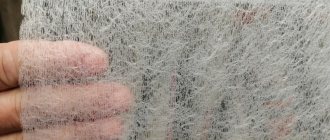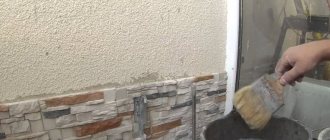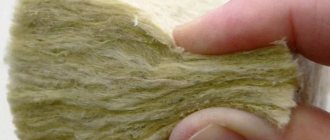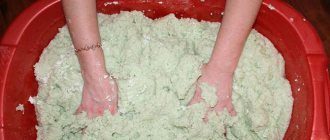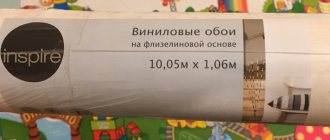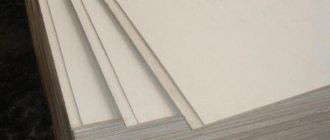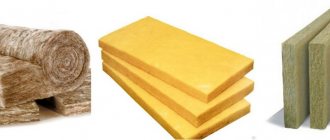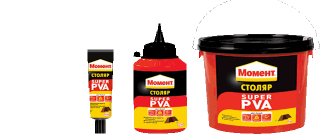A tool that is used in repairs, handicrafts and in various everyday situations - a glue gun. It has a simple design and is easy to use. The main thing is to choose a suitable model and use it correctly, observing safety precautions.
What is a glue gun?
The product is a soldering-thermal tool of simple design, which is used for reliable connection of different materials, modeling, sealing and decorating objects. The glue gun has gained wide popularity due to the high bonding properties of its special composition, which hardens quickly and does not have an unpleasant odor. Among the many types, you can choose a model to perform work of any complexity.
Glue gun device
The functioning scheme is the same for all models. A glue gun for crafts and other purposes consists of the following elements:
- plastic case;
- guide coupling;
- mechanism for advancing the glue stick;
- thermal camera;
- nozzles;
- electrical cord.
How does a glue gun work?
The main purpose of the tool is gluing parts together. The principle of operation is to heat hot-melt adhesive with a solid consistency to a viscous state. After cooling, the structure becomes solid again, which forms a reliable connection. This process is called polymerization. An electric or battery-powered glue gun is refilled with a stick.
The device is turned on and left for a while to allow it to warm up. When the trigger is pulled, molten glue flows through the nozzle under pressure. The rod is a piston through which the composition is supplied. The device heats up to the desired temperature and then maintains it until it cools down. After finishing the work, place the tool on the stand and leave to cool completely.
Glue sticks for heat gun
Glue guns differ not only in appearance, body size and different operating parameters, but also in the diameter of the glue stick (7 or 11 mm). A number of models work with rods with a diameter of 7 mm, while others use rods with a diameter of 11 mm.
For small decorative sewing and needlework work, it is better to use guns designed for glue sticks with a diameter of 7 mm. Firstly, the body size of such a gun will be smaller and more compact, and secondly, the glue will heat up faster. Accordingly, its price will be significantly lower than a pistol intended for professional installation and construction work.
Glue sticks intended for needlework are available not only colorless, but also colored. This allows you to glue rhinestones and jewelry without traces of the glued area. There are also special rods with various types of fillers, such as glitter. Consider all this when purchasing a gun and rods for it.
What can you glue with a glue gun?
To understand the uniqueness of this tool, you need to know what can be glued with a hot-melt gun:
- paper and cardboard;
- textile;
- metal;
- skin;
- plastic;
- ceramics;
- stone;
- tree.
What materials can be glued
Hot melt adhesive is suitable for a wide range of materials. Regardless of what needs to be glued with what . Be it paper, cardboard, textiles, ceramics, rubber, wood, foam, metal, flowers - the main thing is to choose the right adhesive composition. It is necessary to correctly determine the type of rod suitable for the task. There are even two-component adhesive mixtures for gluing some materials. The rods are marked by color according to their purpose:
- transparent - the most popular and versatile consumable;
- opaque in any color except black and white - universal rods for obtaining a colored adhesive seam or for decorative purposes;
- white opaque - for gluing metal and glass;
- yellow transparent - for working with wood, cardboard, paper;
- black and gray - sealant and insulating material.
These are the main markers for the purpose of the cartridges. They are not always the norm for different manufacturers, so it always makes sense to read the instructions for the rods. If you have difficulty understanding what specific type of glue is needed for the job, the transparent rod is applicable in almost all situations.
Pros and cons of a glue gun
The product has positive and negative sides. The best glue gun has the following advantages:
- wide scope of application;
- fast gluing speed;
- ease of grip;
- does not leave glue residues;
- compactness and lightness;
- low cost of components;
- the rods do not lose their quality over time.
The disadvantages of a glue gun include:
- temperature restrictions;
- inability to use in the absence of electricity;
- waiting for complete warm-up before starting work;
- impossibility of gluing on cement surfaces;
- cannot be applied immediately to large areas.
Operating principle and design features
It has always been believed that the simpler the design features of a product, the more reliable the equipment. This rule also applies to a glue gun. It is made from a minimum number of parts that are highly reliable; when used correctly, the likelihood of breakdowns is eliminated.
The device is shaped like a regular pistol - there is a handle and a barrel into which a glue stick is inserted. It passes through a coupling, which leads to the melting chamber, where the heating element is installed. Part of the rod melts, its solid base is fed, creating pressure. Due to this, liquid and hot glue is squeezed out through the nozzle. Any pistol has 7 main parts in its design.
Frame
It is entrusted with 2 main tasks:
- holding all components of the tool,
- acting as a stand.
When the glue stick melts into a liquid mass, it is not recommended to hold the tool with the muzzle up for a long time; you should not lay the gun on its side while it is turned on. To increase service life, prevent the case from overheating.
At the bottom of the handle there is often a special platform, thanks to which the device is placed, and in front there is a folding stand. Due to this, the gun includes several support points for fixation in the desired position.
During operation, some elements become very hot, so the body is made of special plastic with minimal heat conductivity. The device is lightweight, on average 300 grams. The handle of the tool does not stand out, there is wiring running through it, and there is a trigger. For more convenient use, there may be rubber inserts on the outside.
Feeding device
Once the rod is installed, it is in direct contact with the pusher. This part is in the form of a ring, it can be metal or plastic. Using the trigger, force is applied, the ring is rotated vertically several times, due to which the rod is grasped and moved towards the heating element. The weakest point in the hot glue gun is the lever that transmits force to the ring. This is caused by the fact that beginners, when working, press hard on the trigger, with the hope of squeezing out the maximum amount of glue at a time.
When choosing a tool for yourself, you need to understand that a ring created for a specific rod can become a problem. As a result, even a small difference in diameter will cause difficulties with patency, or there will be slippage.
Guide coupling
It is presented in the form of a rubber tube, one part is put on the heating chamber, and a glue stick is inserted into the second. The element has two important functions:
- wraps around the adhesive part, thereby preventing the liquid mass from flowing out of the chamber into the body,
- is a temperature bridge, which prevents the rod from melting during a pause in operation.
Although the clutch is made of heat-resistant rubber, it is a weak point in the gun. If overheated, it is easily damaged if you twist the rod or simply pull it out. It is recommended that when replacing the adhesive element, cut off one part, leaving the rest inside, then insert new glue, and squeeze out the excess using the standard method.
Heating chamber
It is presented in the form of a metal pipe where the heating element is located. Pistols from different manufacturers use different versions of the mechanism. Some models have several heating elements at once, which melt the rod in several places at the same time.
The power of the device and performance depend on the camera. The higher its volume, the wider the part of the rod that will be heated, and the speed depends on the heating element and power. The element belongs to the main part and is highly reliable. Correct use of a glue gun prevents damage to the heater.
Nozzle
The element in the gun acts as a dispenser and helps to squeeze out the glue of the desired shape. When choosing, you need to proceed from the class and price of the equipment. There are direct-flow nozzles and with a valve. The first design is common, it makes it possible to squeeze out glue of a certain thickness, and the dose is determined by the mechanism. The downside is a slight loss of glue due to fluidity.
The valved nozzle includes an internal ball that closes the outlet if the trigger is not operated. But even modern and functional pistols require the use of additional stands for glue in case it leaks.
The nozzle is made of metal, the outer part is covered with a casing, which eliminates the possibility of burns. With a removable element, manufacturers additionally equip the guns with attachments that help squeeze out a lot of different shapes. In addition, there are standard and extended types of nozzles, due to which you can reach narrow places. Additional parts are attached using threads, but they must be replaced with a warm gun when the glue is liquid.
Types of glue gun
The tool is classified depending on its design, functions and other indicators. According to the use of the product there are:
- Professional
. A more powerful option, warms up within a few seconds. Can be charged with rods, pellets and cylinders. - Household
. These models melt the glue in about 4 minutes. Power does not exceed 60 W. Charged with rods.
According to the method of heating the glue:
- gas
– fueled with butane; - electric
– heating source household network or batteries; - network
- works only from an outlet; - cordless glue gun
– mobile version that requires recharging; - pneumatic
– professional glue gun.
Based on heating temperature, products are divided into:
- low temperature up to +110ºС;
- high temperature not less than +195ºС.
Video description
Video about what a glue gun is:
Extra options
When choosing a hot-melt adhesive tool, it is also necessary to take into account a number of additional parameters that affect the comfort of use, such as:
- Thermostat. Allows you to select temperature conditions for working with different types of materials.
- Electronic auto thermostat. Prevents unexpected overheating and damage to the device, as well as overuse of glue. Works in 3 modes - warming up, working, standby.
- Indication. When the heating level in the melting chamber reaches the operating value, a special light on the body lights up.
- Illumination of the work area. Improves performance in hard-to-reach shaded areas.
- Power off button to de-energize the tool during prolonged inactivity.
- Nipple in the nozzle. Reduces glue loss when the device is in standby mode.
- Equipment. Determined by specific brand. The standard version includes a case, a set of rods and a mat.
How to choose a glue gun?
In order to use the tool for its intended purpose for a long time, you need to know how to choose a glue gun for needlework and other purposes. It is important to pay attention to the following parameters:
- Product weight
. The lighter the device, the easier it will be to use. - Type of food
. Depends on the place where the tool is going to be used. It can be powered by a wall outlet or battery. - Productivity
. The indicator fluctuates in the range of 5-30 g/min. For a home, low indicators are enough. - Tool size
. This parameter depends on the area of application and the ability to work in hard-to-reach places. - Stand stable
. The bracket should be wide to prevent the glue gun from tipping over. - Availability of consumables
. The most common diameter of glue sticks is 7-11 mm. - Working temperature of the melt
. It all depends on future work. For paper and fabric, heating up to +105ºС is enough. The universal tool has an indicator of +165…175ºС.
Glue gun refills
They are plastic products that, when heated to the desired temperature, turn into a liquid state. The main component in the composition is a thermoplastic polymer, the rest are resins and plasticizers. Depending on the type of main component, the following types of rods are known:
- ethylene vinyl acetate
– low melting point; - polyamide
- high heating rate; - polyester
- the most refractory material; - silicone
- can work at low temperatures; - rubber
– characterized by moisture resistance; - polyurethane
– long polymerization period.
Types of glue gun refills vary depending on color:
- Transparent colorless
. Universal adhesive suitable for all surfaces. - Transparent with yellowness
. Used when working with paper, wood, some types of plastic and metal. The composition is able to withstand moisture. - White
. Used for joining glass and metal. - Colored sticks for glue gun
. The qualities do not differ from universal ones. With their help, you can make the seam on colored products as invisible as possible. - Black and gray
. Used to insulate electrical contacts. - Decorative for creativity
. Glitter glitter rods.
Criterias of choice
Do you think the glue gun is easy to use?
ConvenientInconvenient
There are several important factors that you need to pay attention to when choosing a device, namely:
- Power and heating rate . The higher this indicator, the less time it takes to heat up to start using the tool. Professional gadgets have a power of about 300 W, while household ones vary from 100 W to 200 W.
- Melt temperature . The lower the temperature limit, the fewer adhesives can be used. Most appliances operate at 105 degrees. But in some professional models the melt temperature reaches 200 degrees. 165 – 170 degrees is the best option for working at home or for professional use.
- The performance of a hot-melt gun or an indicator of how much glue it squeezes out per minute . For different devices, this value will vary from 5 to 30 grams per minute and is usually indicated in the device passport. It is also worth paying attention to the flow time of the glue (especially when you plan to work on a large area).
- Type of power source . There are models powered by mains, battery, and semi-autonomous.
- Diameter and length of the glue stick . The optimal value is 7 – 11 mm for domestic use. If you plan to use a heat gun in the professional field, then it is better to choose devices that support a diameter of up to 45 mm. The length of the rods is standard and reaches 20 cm.
- Glue supply mechanism . If there is a trigger, you must press it to feed the gluing element. In its absence, feeding is carried out manually.
- Availability of nozzle attachments . Removable attachments will help expand the area of use of the glue gun.
There are also several additional features. Among them are the presence of a temperature regulator, a readiness indicator, backlight, viewing window, stand, and so on. You also need to pay attention to this when choosing a device.
Glue gun rating
Among the assortment offered on the market, there are several brands that have proven themselves well. The best professional glue guns:
- Bosch PKP 18 E glue gun
. Precise application of glue. - Steinel NEO 1 334 109
. Unique product shape. - Hammer GN-06
. Maximum convenient charging. - Matrix 93015
. High-quality temperature regulation. - Simplelive 150 W 140-220
. Glue gun with temperature control. Ideal comfort in use.
Best glue guns for crafts:
- Hobby and Pro DS-040
. The best products with high heating temperature. - UHU Creative
. Excellent build quality. - Elitech PKL 5015K
. There is a power indicator light. - Steinel Gluematic 5000
. High performance glue gun. - Dremel 930-18 Hobby
. Comes with glitter sticks.
Professional and household models
All glue guns are divided into equipment for permanent professional use and for household use. The price also depends on this, since professional devices are much more expensive.
As a rule, guns for construction are more durable and wear-resistant. Their parameters are more accurate and practical, and temperature control is as accurate as possible. Household heat guns are simple and straightforward in their functionality. They cost significantly less due to the fact that they are made from ordinary materials and cannot provide high-quality settings.
How to use a glue gun?
Before applying hot glue, the surface must be carefully prepared: clean, degrease and dry. The thermal gun is used as follows:
- insert the rod;
- place the instrument on the stand;
- turn on the device;
- wait a few minutes;
- start work;
- pull the trigger and apply glue to the desired place;
- Fix the parts to each other for a couple of minutes.
Safety precautions when working with a glue gun are as follows:
- do not leave the tool unattended;
- do not place it on its side, but place it on a stand;
- use only a working pistol;
- do not touch the tip of the gun when it is in working condition;
- Be sure to turn it off after finishing work.
How to remove glue from a glue gun?
Sometimes it is necessary to replace the rod. When the gun is cold there should be no problems. When heated, the glue for the glue gun is removed as follows:
- firmly clamp the rod with your fingers;
- scroll around its axis a couple of times;
- carefully remove from the heating chamber.
Application area
A glue gun is a universal device. It is designed for reliable and convenient connection of two surfaces, and is also popular among needlewomen, engineers, radio amateurs, fashion designers, florists and designers. Hot-melt adhesive can be used to bond homogeneous and dissimilar materials:
- wood;
- glass;
- ceramics;
- crystal;
- faience;
- polymers;
- concrete;
- metal;
- stone;
- Styrofoam;
- PVC linoleum;
- paper;
- textile.
The gun glues products almost instantly. The heated glue hardens in a few minutes, but there is still time to adjust the result. Hot-melt adhesive is water-resistant, highly durable, and due to the absence of solvents, it is superior in environmental friendliness to two-component products, Moment. The advantage of using a hot-melt gun with glue is the ability to start using the product literally in 30-60 minutes, when the composition has already gained strength.
Crafts with glue gun
You can make many beautiful and original things with this tool. Interesting crafts using a glue gun:
- Corals
. They are created from interweaving thin wire, which is treated with hot glue. You can use colored rods or then apply paint of a certain shade. - Snowflakes
. A diagram is drawn on paper, and all the contours are covered with glue. Then they are separated from the base. If necessary, use colored varnish or acrylic paint. - Candlestick
. Take a glass and cover it with film. Use a glue gun, apply patterns with glue, allow time to cool. Then remove the cellophane and use the craft for its intended purpose. - Bracelet
. Use a tin can. Glue is applied to the surface in any suitable pattern. Allow time to cool and decorate with decorative elements. - Shoes for Dolls
. The legs are covered with film and glue is applied to form the product. Cover with paint or varnish. Remove and clean sharp corners. - Cat scratcher
. Take ordinary rubber gloves and apply drops of glue. Leave until it hardens and you can pet your pet.
Using a heat gun to create decorative items
The universal polymer composition is very convenient to heat up and make various piece products from it, perform decorative work or paint with the molten mass of different colors. Often a glue gun is used in modeling, making frames and other structures.
Advice
If the device is purchased for handicrafts, special attention should be paid to its configuration - some models provide a number of different nozzles with different nozzle diameters or an elongated feed spout, which is convenient when working in “blind spots” or recesses.
Lifehacks with a glue gun
You can do many useful things with hot glue:
- Stopper for the sink
. Take a balloon, put it on the gun and release the glue. Place it in the hole in the sink and press tightly. After drying, the ball is removed. - Eraser for a pencil
. Apply a small amount of glue to the edge of the pencil. After hardening, it will completely replace the eraser. - Knife case
. Take a hot glue gun and apply the heated compound to the tip. When hardened, the glue forms a durable cover. - Hemming clothes
. Cut off the excess and apply glue to the edge. It will not only fix well, but will also prevent the threads from fraying. - Case for phone
. After covering the surface with film, draw any patterns with glue. When everything has hardened, the film is removed and the resulting accessory is put on the phone.
How to use a rod without a device
If the consumables remain, but the device is broken, then you can still try to glue it together. You can achieve the required melting temperature of the polymer by heating it with a gas burner, electric stove, or using a hair dryer, candle, or soldering iron.
You can apply glue to the part with any suitable object, for example, an awl or a screwdriver. A metal tool is best because it won't melt.
The rod needs to be brought, for example, to a candle. Then take the required amount of glue with an awl, heat it again and apply it to the prepared element. Of course, a pistol cannot compare with this method, but if you urgently need it, you can try it.
How to fix a glue gun?
If used incorrectly, some problems may occur. Let's consider what to do if the heat gun fails:
- Trigger jamming
. Often the problem is that the rod is too tight. They move it back a little and try to pull the trigger. If nothing is fixed, you need to disassemble the structure and align the parts to increase the gap between the heater and the rod - No glue movement
. The reason is that the gun is clogged. Everyone is disassembled and all parts are cleaned. - There is no full heating of the glue
. The reason is insufficient supply of electric current. Check the glue gun for the integrity of the wires and the internal fastening of all parts. - The glue flows without pressing the trigger
. Reasons: very high heating temperature, discrepancy between the diameter of the rod and the gun, poor quality. The device is disassembled and cleaned.
Safety precautions when working with the device
Despite the fact that the tool is quite easy to use, it must be remembered that this is a high-risk device. It operates at high temperatures and is connected to the electrical network, so during operation it is necessary to observe safety precautions:
- Each model has its own continuous operation time. For industrial appliances it is greater than for household appliances, but it is also limited. It is forbidden to continuously use the heat gun for longer than the specified time, otherwise it will break. Professional devices most often have an automatic shutdown timer.
- Do not touch the nozzle during operation. Molten glue leaks out from there, which can burn you. You can change the nozzle only after the device has been completely turned off and cooled down.
- Substances not intended for it should not be poured into the heat gun. Only glue cylinders are inserted inside.
- Children may use the heat gun only under adult supervision to ensure that all safety rules are followed. Contact of the skin and hot elements should be avoided, and glue should not get into the eyes, inside, or onto mucous membranes.
How to replace a glue gun?
When the glue gun is missing or broken, and you need to use hot glue, you can do the following:
- A piece of refill is inserted into a ballpoint pen and melted over a fire. The composition will cool quickly, so it needs to be constantly reheated.
- Place small circles of glue on the match. They melt everything by simply lighting a match. This is a suitable option for emergency situations.
- Pieces of glue are melted on a preheated surface, and then a small amount is taken with any stick and applied to the desired location.

